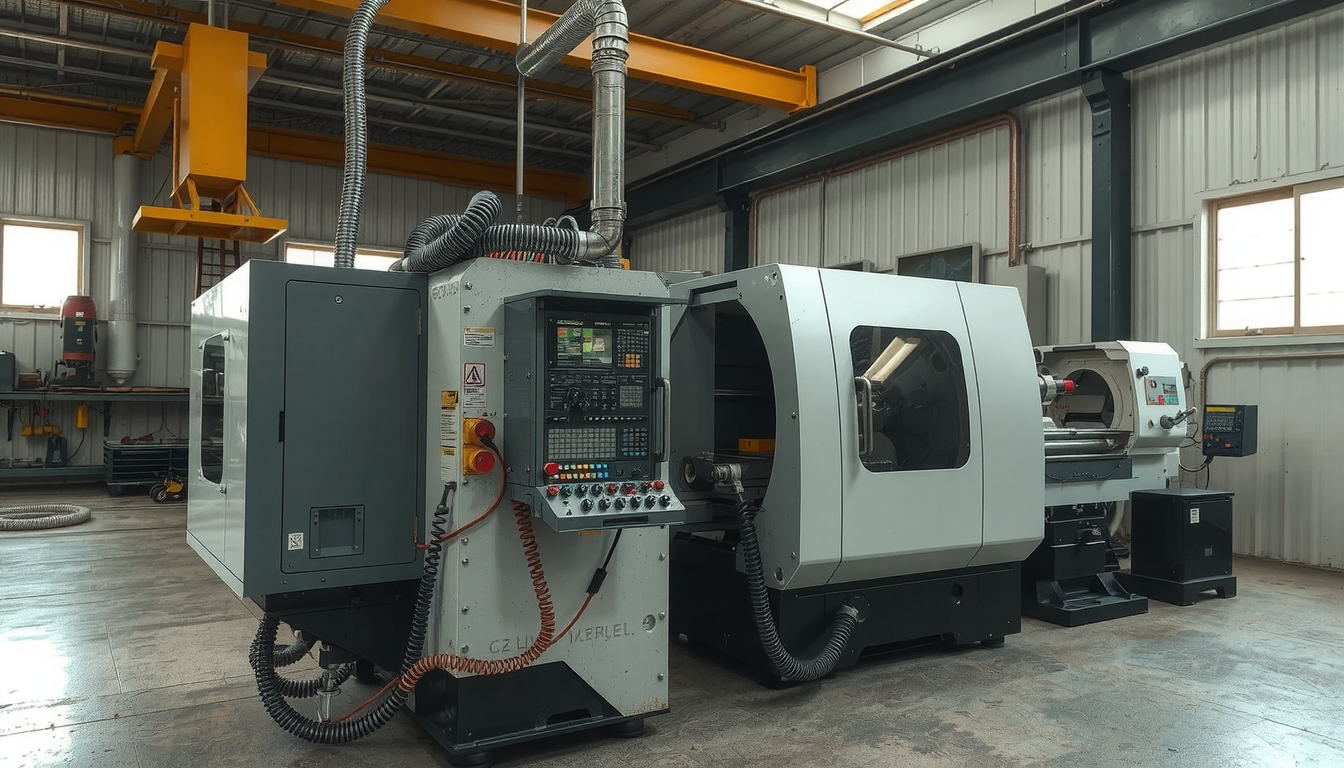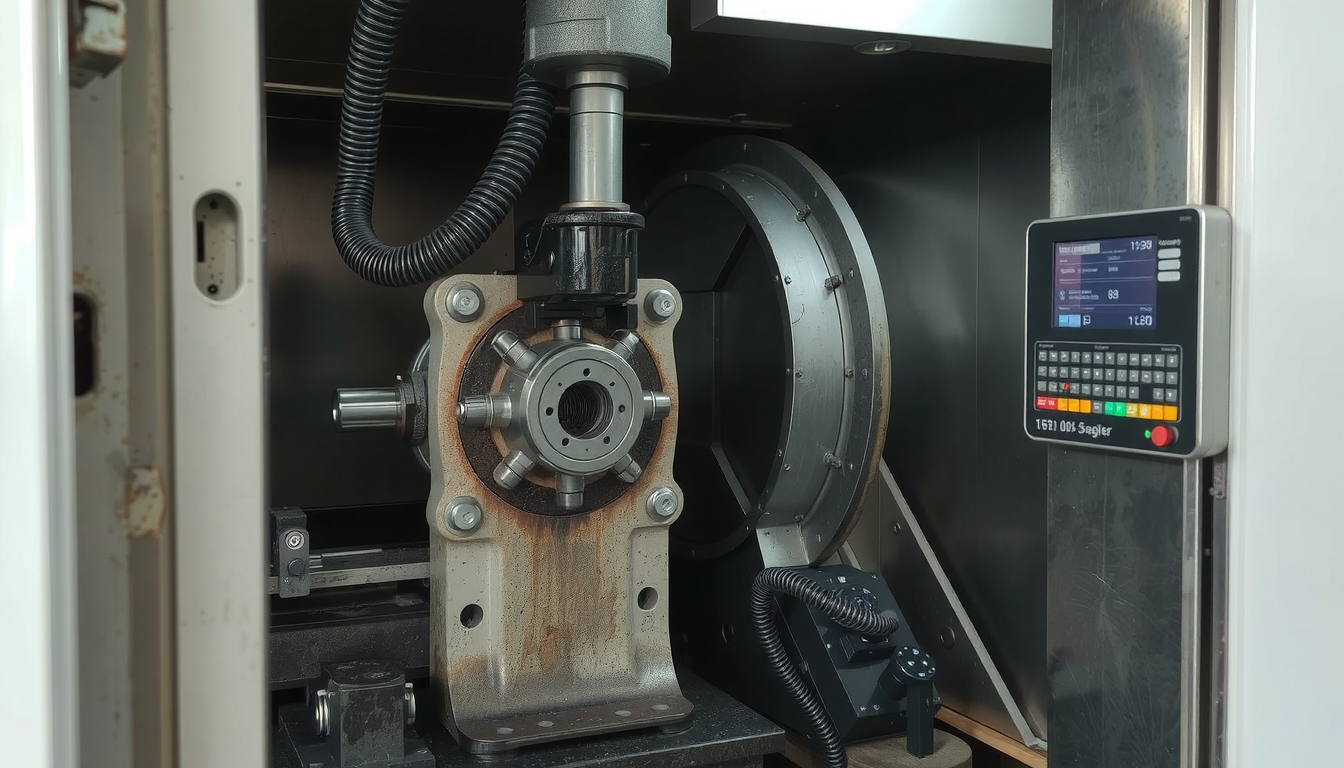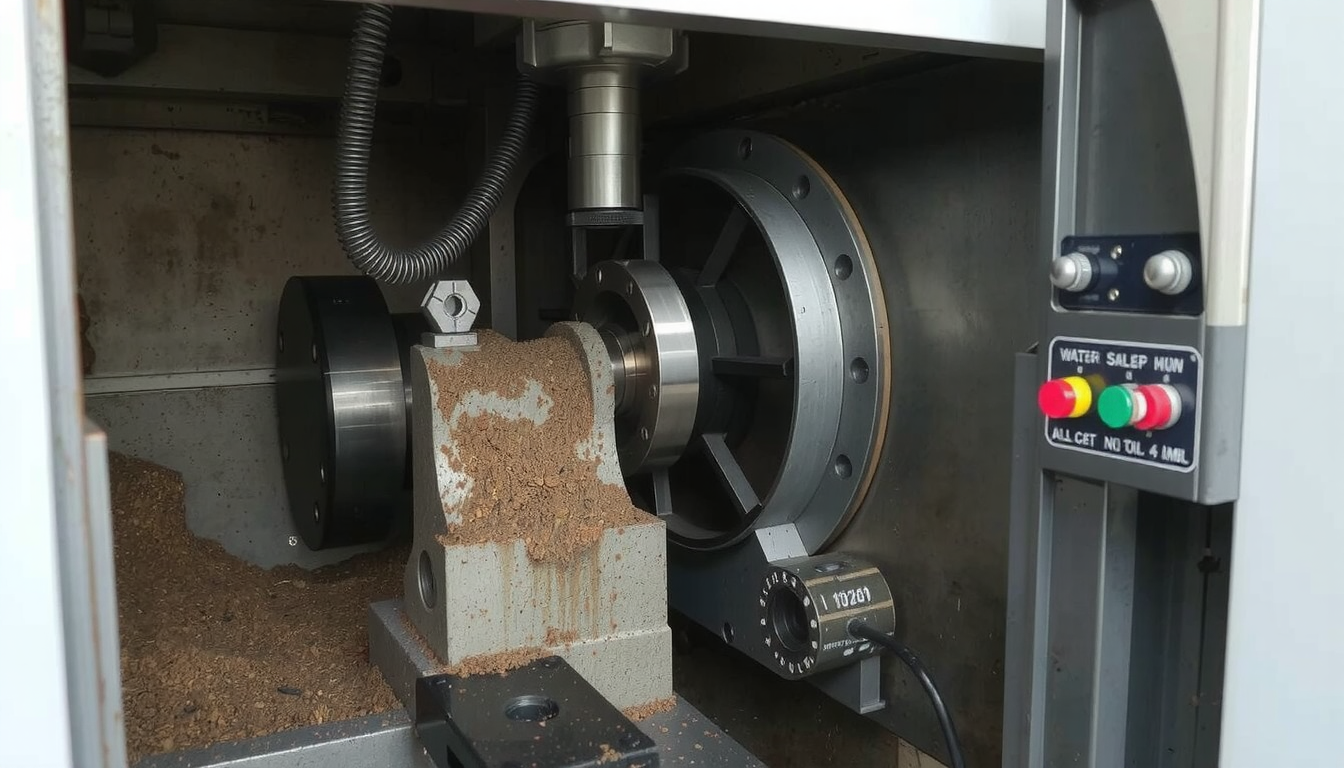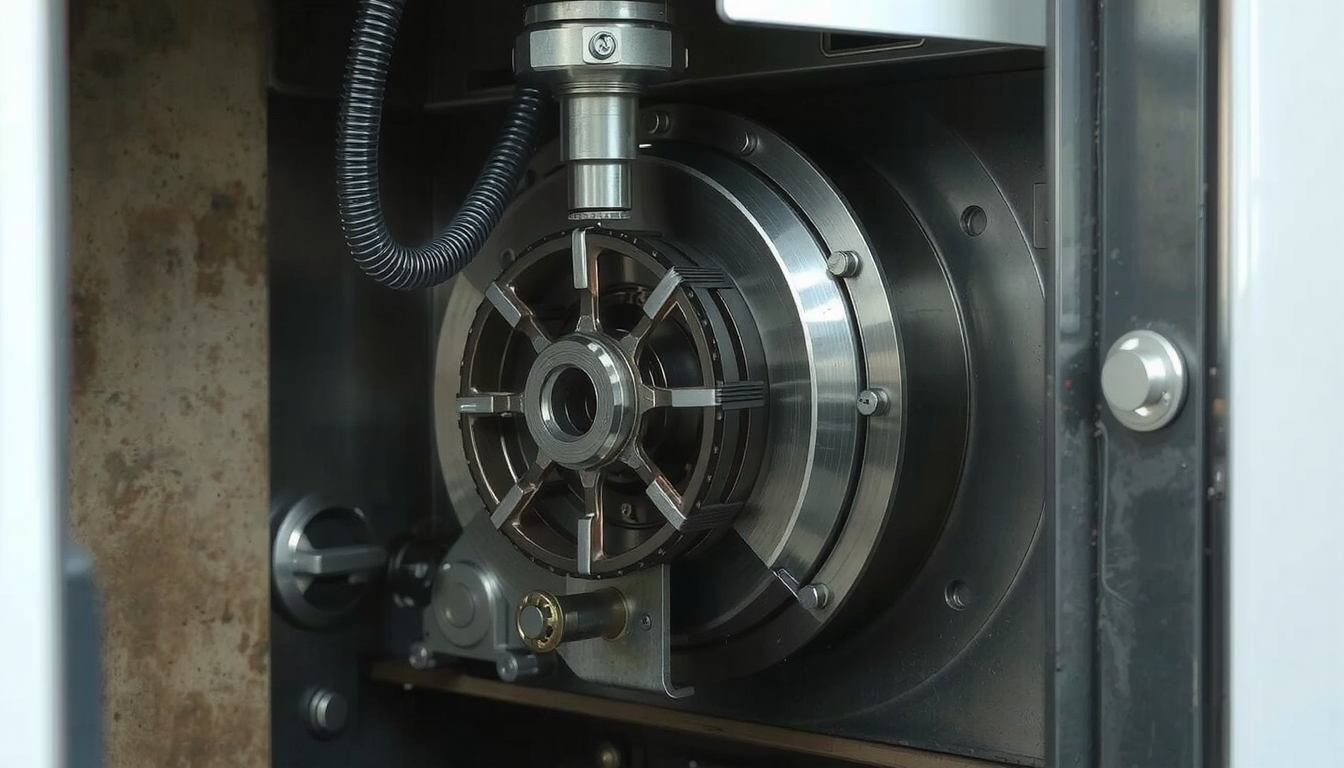A CNC lathe is a precision machine that rotates materials while a computer-controlled tool shapes them. The term “CNC” stands for Computer Numerical Control. This means a computer program guides the machine’s movements. A human operator does not control it directly.

Think of it like a modern potter’s wheel, but for metal or plastic. A traditional manual lathe needs a skilled person to turn wheels and move levers. A CNC lathe does the entire process automatically. This automation gives incredible accuracy. It can make many identical parts perfectly. This article explains what a CNC lathe is, how it works, its key parts, and where it is used today.
How Does a CNC Lathe Work? From Digital Design to Finished Part
Understanding what a CNC lathe is means knowing how it works. The process turns a digital idea into a real part through several clear steps. It is a journey from a computer screen to a finished component.
Here is how a part is made on a CNC lathe.
Step 1: The Digital Blueprint (CAD/CAM)
First, an engineer creates a 3D model of the part. They use Computer-Aided Design (CAD) software. This is the digital blueprint.
Next, that CAD model goes into Computer-Aided Manufacturing (CAM) software. The CAM software plans the best way to cut the part. It decides which tools to use and creates the cutting paths.
Step 2: The Language of the Machine (G-code)
The CAM software translates the cutting plan into a special language called G-code. G-code is a set of simple instructions. The CNC lathe’s controller can understand them.
Each line of G-code tells the machine exactly where to move. It says how fast to go and when to turn the spindle on or off.
Step 3: Machine Setup and Workholding

Now we move from the computer to the machine. An operator takes a piece of raw material. This is often a metal rod called a workpiece. They secure it tightly in the machine’s chuck. The chuck is a powerful clamp that holds the material while it spins.
The operator also loads the needed cutting tools into the tool turret. The turret holds several tools. It can rotate to bring the right one into position for each cutting operation.
Step 4: The Automated Machining Process
With the material and tools in place, the operator starts the G-code program. The machine’s safety doors are closed. The process begins.
The main spindle starts to spin the workpiece at high speed. Sometimes it spins thousands of times per minute. The CNC controller reads the G-code and directs the tool turret to move. The cutting tool moves along two main directions. The Z-axis goes lengthwise. The X-axis goes crosswise. It cuts away material to shape the part.
Step 5: Final Part and Quality Control
Once the program is finished, the spindle stops. The operator opens the door and removes the newly machined part.
The part is not truly finished until it is inspected. The operator uses precise measuring tools like digital calipers. They might use a Coordinate Measuring Machine (CMM). The operator checks every dimension. This ensures the part meets the exact specifications from the original CAD drawing.
The Anatomy of a CNC Lathe: Understanding the Core Components
To fully grasp what a CNC lathe machine does, you need to know its main parts. A CNC lathe is an assembly of intricate components that work together to achieve precision. Each part has a specific job.
Here are the core components of a typical CNC lathe:
- Headstock: The headstock is the main body of the machine. It contains the primary motor and the main spindle. It provides the power to rotate the workpiece.
- Spindle & Chuck: The spindle is the shaft that rotates. The chuck is attached to the end of the spindle. It is a specialized clamp that grips the workpiece securely.
- Bed: The bed is the heavy, solid base of the lathe. It supports all the other components. It ensures the machine is stable and rigid. This stability is key for accurate cutting.
- Carriage & Tool Turret: The carriage is the part that moves along the length of the bed. This is the Z-axis. Mounted on the carriage is a cross-slide. This moves toward and away from the workpiece. This is the X-axis. The tool turret sits on the cross-slide and holds all the cutting tools.
- Tailstock: Located at the opposite end from the headstock, the tailstock can slide along the bed. It is used to support the end of a long workpiece. This prevents it from bending or vibrating during cutting.
- CNC Control Panel: This is the brain of the CNC lathe. It is a computer with a screen and keyboard. The operator loads the G-code program here. They make adjustments and monitor the machining process.

CNC Lathe vs. CNC Mill: Choosing the Right Tool for the Job
A common question for newcomers is how a CNC lathe differs from a CNC mill. Both are core CNC machines. But they work in opposite ways and are used for different types of parts. Understanding this difference helps in selecting the right process.
The main difference is what rotates. On a CNC lathe, the workpiece rotates while a stationary tool cuts it. On a CNC mill, the tool rotates while the workpiece is held still.
This basic difference makes each machine better for certain shapes.
| Charakteristisch | CNC-Drehmaschine | CNC-Fräse |
|---|---|---|
| Core Motion | Workpiece rotates, tool is stationary. | Tool rotates, workpiece is stationary. |
| Best for… | Cylindrical or round parts. | Flat or block-shaped (prismatic) parts. |
| Typical Parts | Shafts, screws, pins, flanges, nozzles. | Brackets, molds, engine blocks, plates. |
| Primary Axes | X (diameter) and Z (length). | X, Y, and Z (length, width, and depth). |
When to Use a CNC Lathe
Choose a CNC lathe for any part that has rotational symmetry. If you can imagine the part being formed from a spinning block of material, a lathe is the right tool. It is extremely efficient for producing shafts, pins, custom bolts, and any other round components. The process is often called “turning.”
When to Use a CNC Mill
Choose a CNC mill for parts that are more square. Use it for parts that have features on multiple flat faces. A mill is perfect for cutting pockets, slots, holes, and complex 3D contours on a block of material. If the part looks more like a bracket, a housing, or a custom plate, a mill is the better choice.
Types of CNC Lathes and Their Real-World Applications
Not all CNC lathes are the same. They can range from simple machines to highly complex systems. The main difference between types of CNC lathes is the number of axes. This determines how complex a part can be.

A 2-axis CNC lathe is the fundamental model in CNC machining. It is the most common type. It is a great starting point for understanding what a CNC lathe is.
2-Axis CNC Lathes
These lathes have two axes of motion. The X-axis controls the diameter. The Z-axis controls the length. They are perfect for standard turning operations like facing, boring, and creating simple cylindrical shapes. They are the workhorses for making parts like shafts, bushings, and flanges.
3-Axis & Multi-Axis CNC Lathes
More advanced lathes add more axes for greater capability. A 3-axis lathe often includes a C-axis. This controls the rotation of the spindle with extreme precision. This allows the machine to stop the part at an exact angle.
These machines also feature “live tooling.” Live tools are small, powered cutting tools in the turret. They include drills or end mills that can spin independently. With a C-axis and live tooling, a lathe can mill flats, drill holes, and cut slots on the side of a part. This turns the machine into a “turning center.” It can complete a complex part in a single setup. Multi-axis machines dramatically reduce setup times. They improve accuracy by doing more work in one setup. This is a key factor in modern manufacturing.
Common Industries and Parts
Because of their speed and precision, CNC lathes are vital in many industries. For businesses needing high-precision components, professional CNC-Drehmaschinen-Dienstleistungen are essential for turning these complex designs into reality.
- Luft- und Raumfahrt: Turbine shafts, engine components, and high-strength fasteners.
- Automobilindustrie: Crankshafts, pistons, transmission parts, and brake components.
- Medizinisch: Custom surgical implants, bone screws, and tools.
- Oil & Gas: Valves, fittings, and downhole drilling components.
Conclusion: The Power of Precision in Modern Manufacturing
We have covered the core question of what is a CNC lathe. We went from its basic function to the detailed process of making a part. We explored its key components, compared it to a CNC mill, and looked at its different types and applications.
The CNC lathe is a cornerstone of modern manufacturing for good reason. It offers unmatched precision. It can repeat that precision thousands of times. It provides incredible efficiency. This technology allows designers and engineers to create complex parts that were once impossible to make. As a leader in manufacturing solutions, Mekalit leverages these advanced technologies to bring innovative ideas to life.
Frequently Asked Questions (FAQ)
What materials can a CNC lathe work with?
A CNC lathe can cut a wide variety of materials. This includes metals like aluminum, steel, stainless steel, titanium, and brass. It also works well with plastics such as ABS, polycarbonate, and nylon. Even some woods can be machined. The right material depends on the machine’s power and the cutting tools used.
Is a CNC lathe the same as a CNC turning center?
The terms are often used to mean the same thing. However, “turning center” usually refers to a more advanced CNC lathe. A turning center typically has extra features. These include live tooling for milling, a sub-spindle for working on the back side of a part, and more axes of motion.
How precise is a CNC lathe?
CNC lathes are extremely precise. A standard machine can easily hold tolerances of ±0.001 inches (0.025 mm). This is about half the thickness of a human hair. High-precision models used for aerospace or medical parts can achieve even tighter tolerances. This ensures parts fit and function perfectly.
Do you need to be a programmer to operate a CNC lathe?
Not necessarily. While some people specialize in writing complex G-code, modern CAM software automates most of the programming. A CNC operator’s job is more focused on setting up the machine, managing the tools, and checking the quality of the parts. However, a basic understanding of G-code is very helpful for troubleshooting problems.
What are the main advantages of a CNC lathe over a manual lathe?
The primary advantages are repeatability, precision, complexity, and efficiency. A CNC lathe can produce thousands of identical parts with no variation. Its computer control is far more accurate than human hands. It can also create complex shapes with ease. It runs much faster, reducing labor costs and production time.

